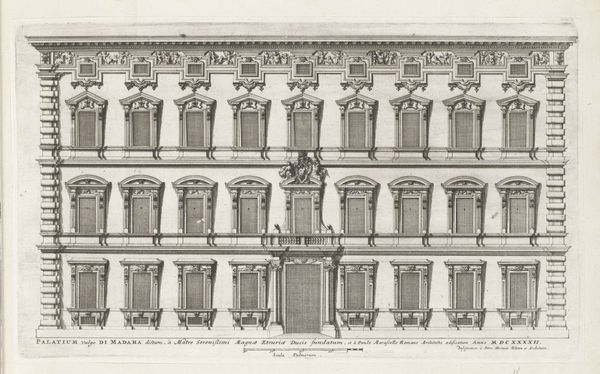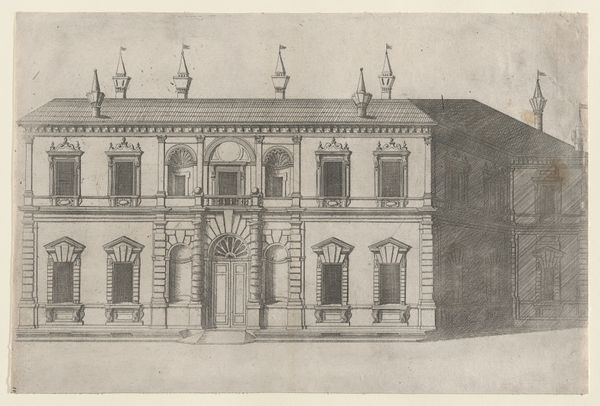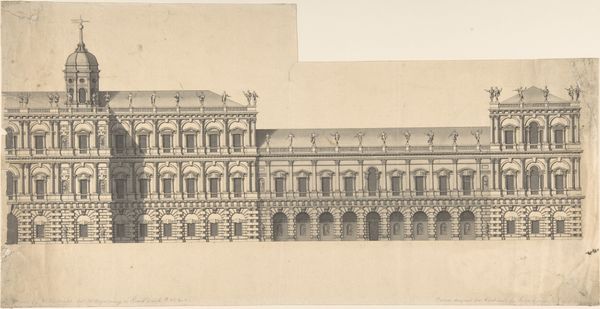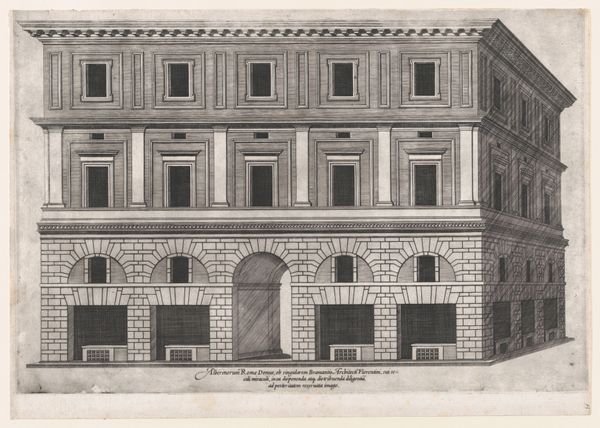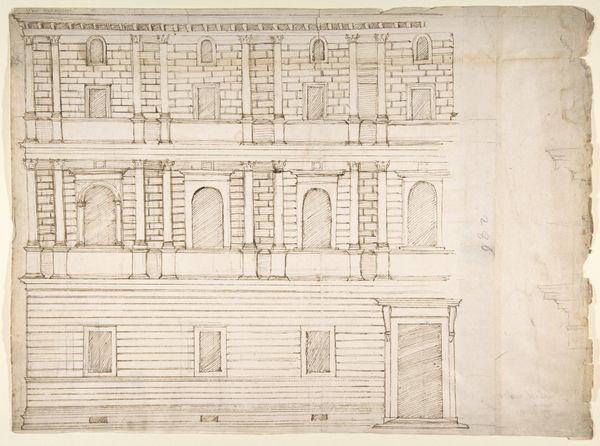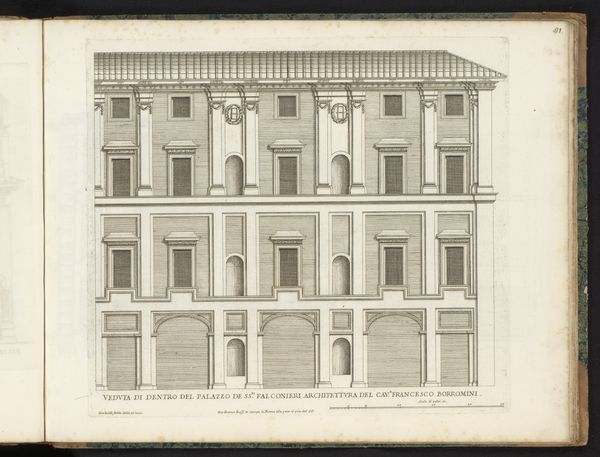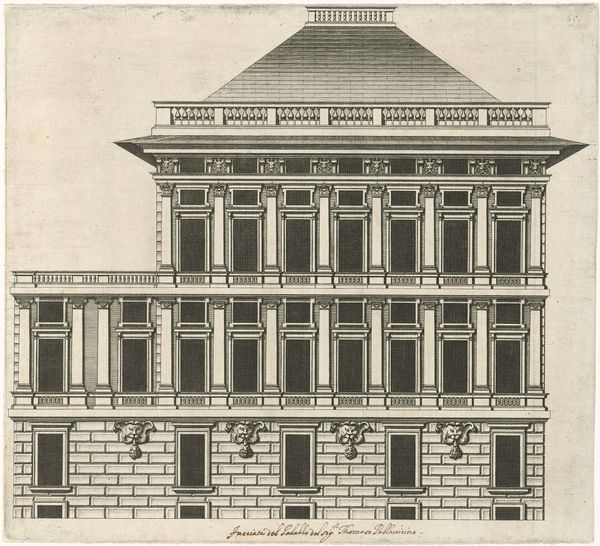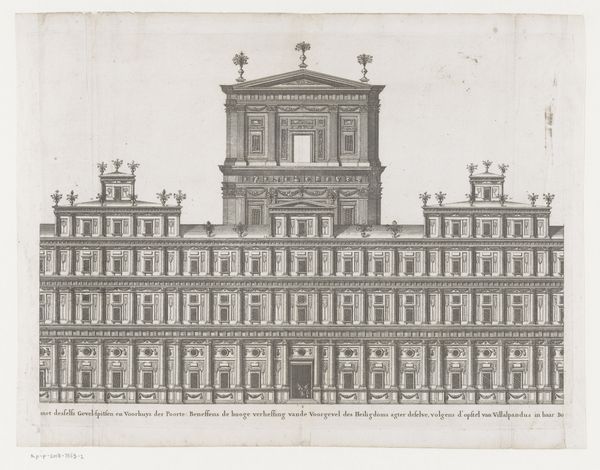
Speculum Romanae Magnificentiae: Exterior of the Farnese Palace 1549
0:00
0:00
drawing, print
#
drawing
#
aged paper
#
toned paper
#
homemade paper
# print
#
old engraving style
#
sketch book
#
hardpaper
#
personal sketchbook
#
golden font
#
historical font
#
columned text
Dimensions: sheet: 17 1/2 x 22 1/16 in. (44.5 x 56 cm) plate: 13 1/4 x 21 1/4 in. (33.6 x 54 cm)
Copyright: Public Domain
Editor: Here we have Nicolas Beatrizet's "Speculum Romanae Magnificentiae: Exterior of the Farnese Palace," a print from 1549. The symmetry is striking, almost overwhelming. What’s so significant about this portrayal? Curator: This print offers us a window into the political ambition visualized through architecture. The Farnese Palace, even in Beatrizet's rendering, was intended to project power. Notice the inscription at the top? It emphasizes the Farnese family's aspirations within Rome. Editor: So, the palace itself is a kind of propaganda? Curator: Exactly. Consider the placement of the Farnese coat of arms prominently displayed above the entrance. It’s a declaration. The family isn't just wealthy; they are intentionally crafting a public image of grandeur and permanence using architectural imagery circulated through prints like this. Editor: How does this relate to other art from the period? Curator: Think about the Renaissance fascination with classical antiquity. Palaces, especially Roman ones, served as modern reiterations. A family would hope that their status would get visually elevated by such association. Beatrizet's print participates in circulating those aspirations and associations on paper. This wasn't just about aesthetics, but actively building and promoting a dynastic legacy through artistic reproduction and consumption. Editor: It’s interesting to see how a seemingly simple architectural drawing is actually steeped in political meaning. Curator: Precisely. Prints such as these shaped perceptions, both then and now, of power, status and permanence. We understand history through imagery as much as documents. Editor: I'll definitely look at architectural renderings differently from now on! Thank you.
Comments
No comments
Be the first to comment and join the conversation on the ultimate creative platform.
